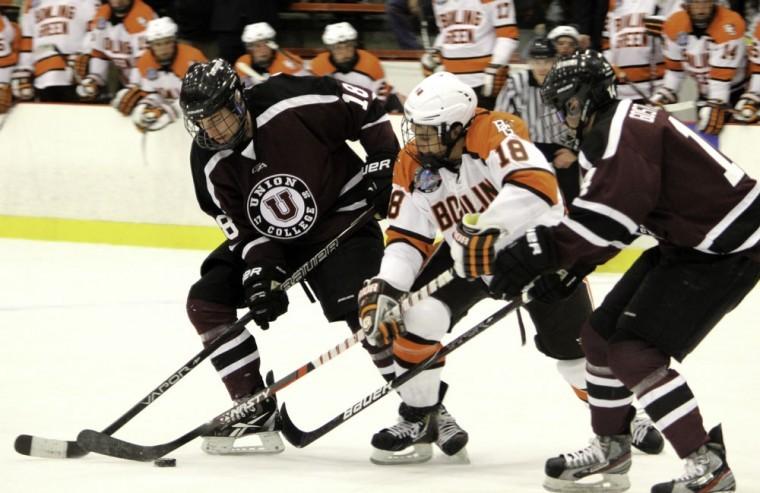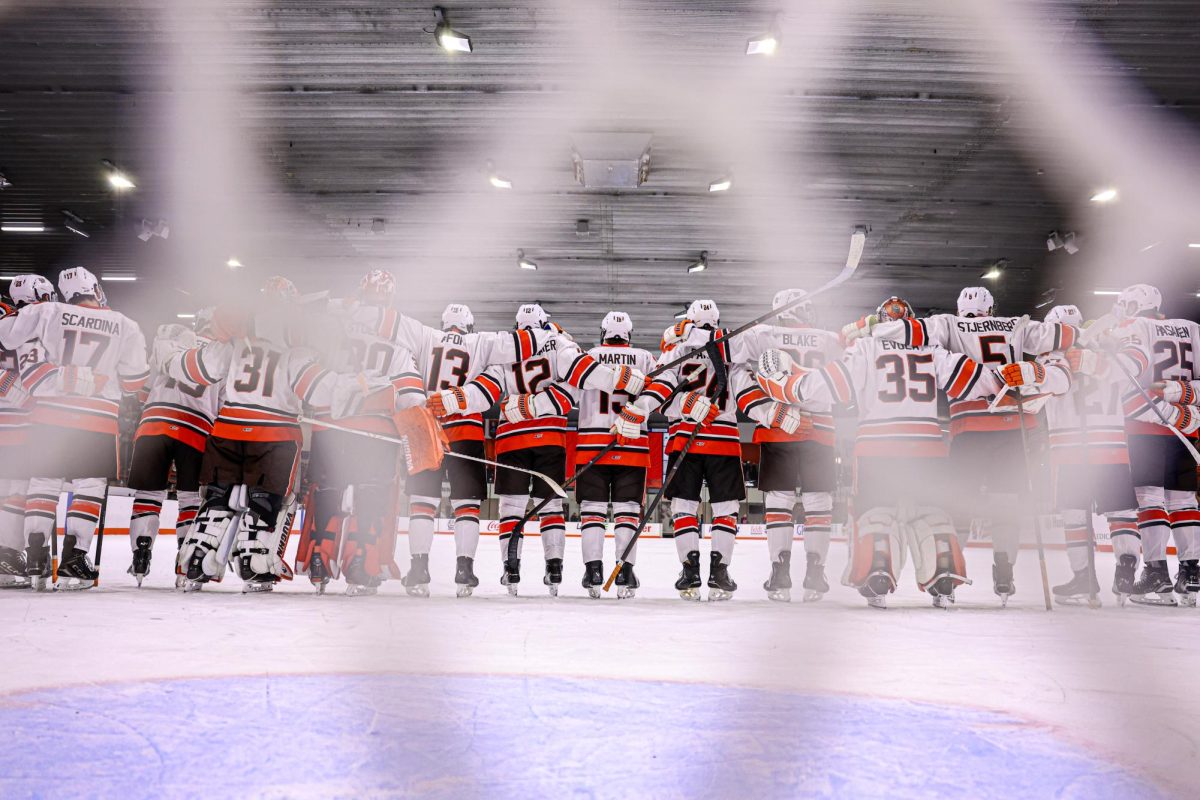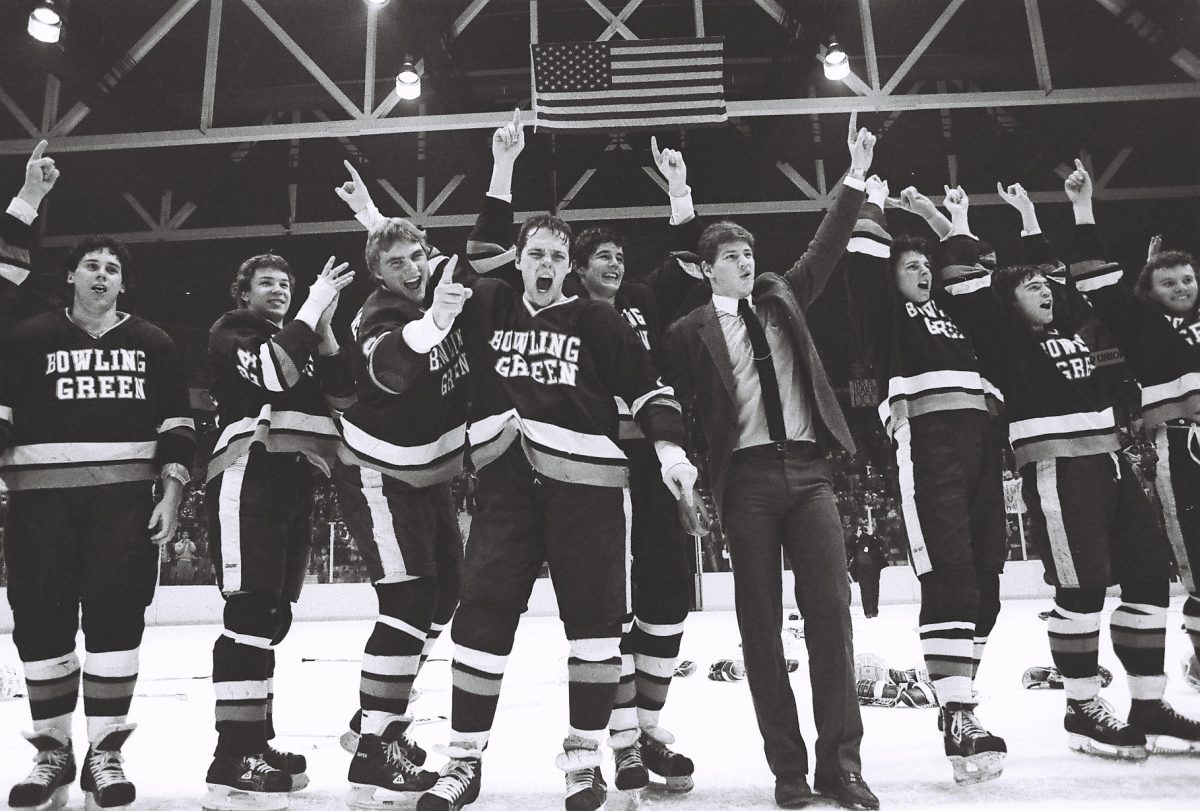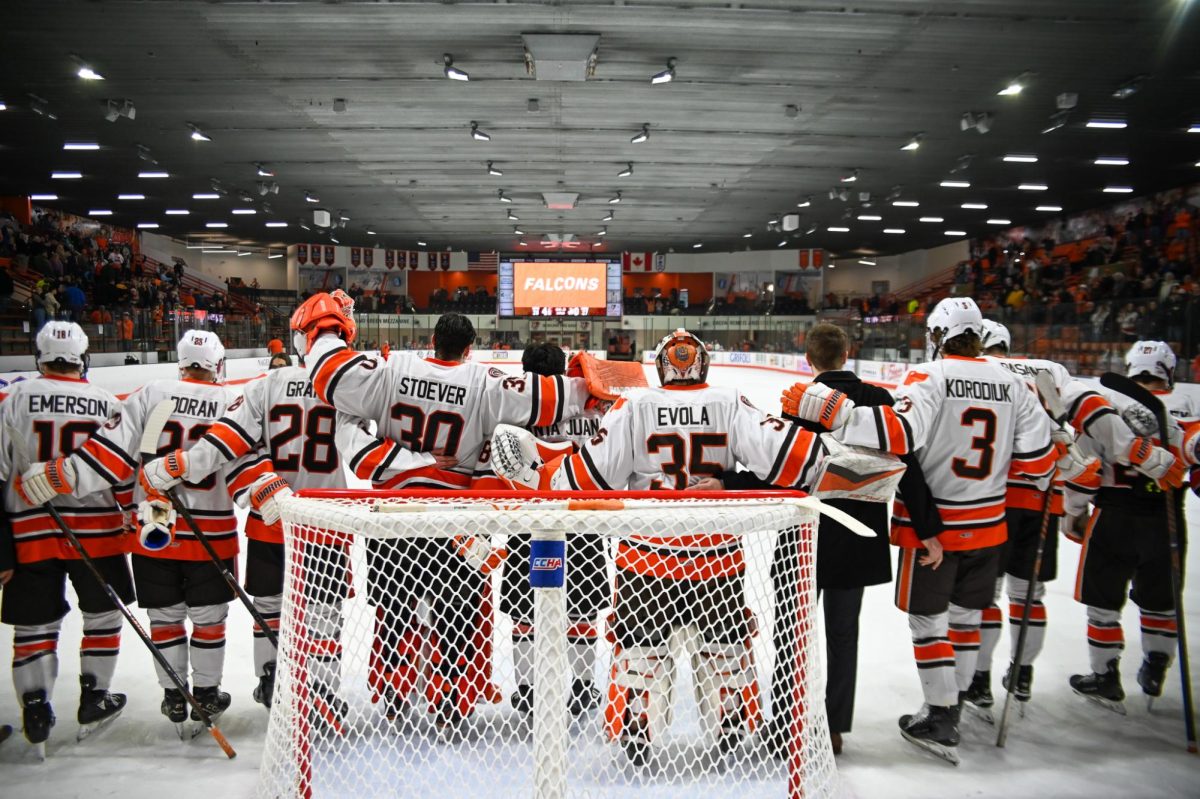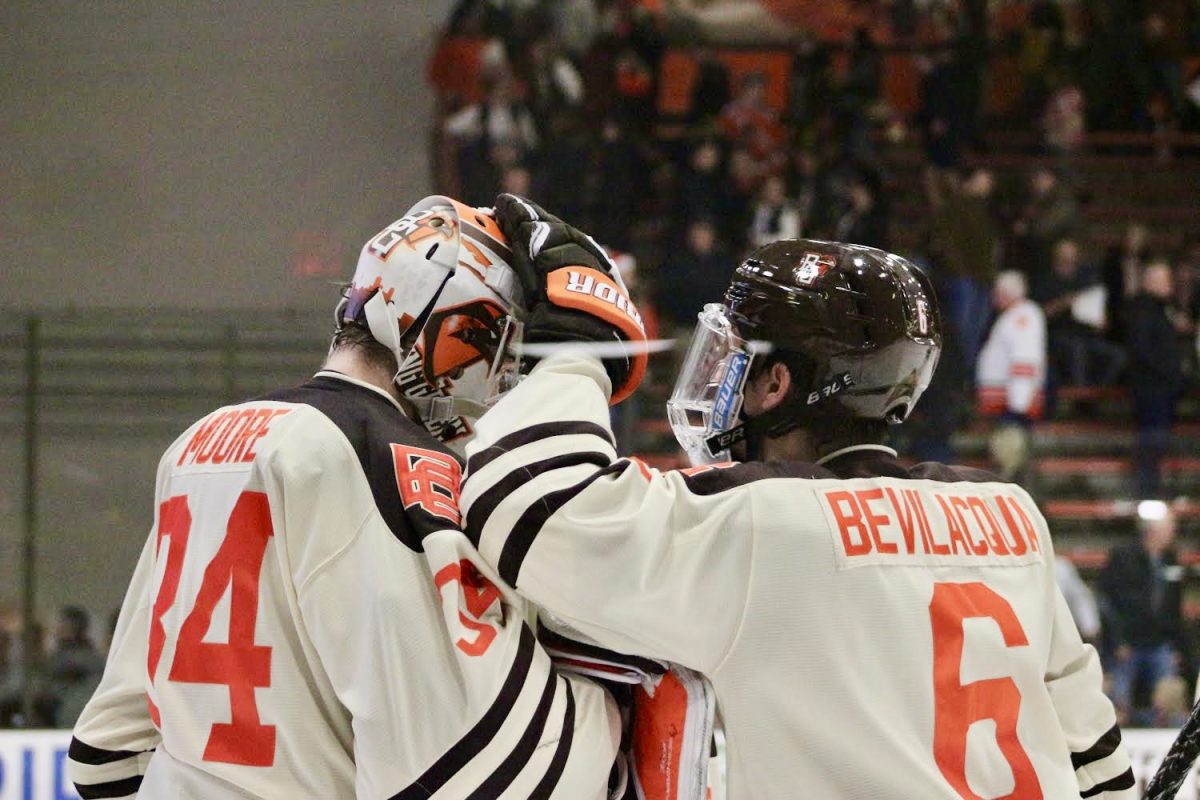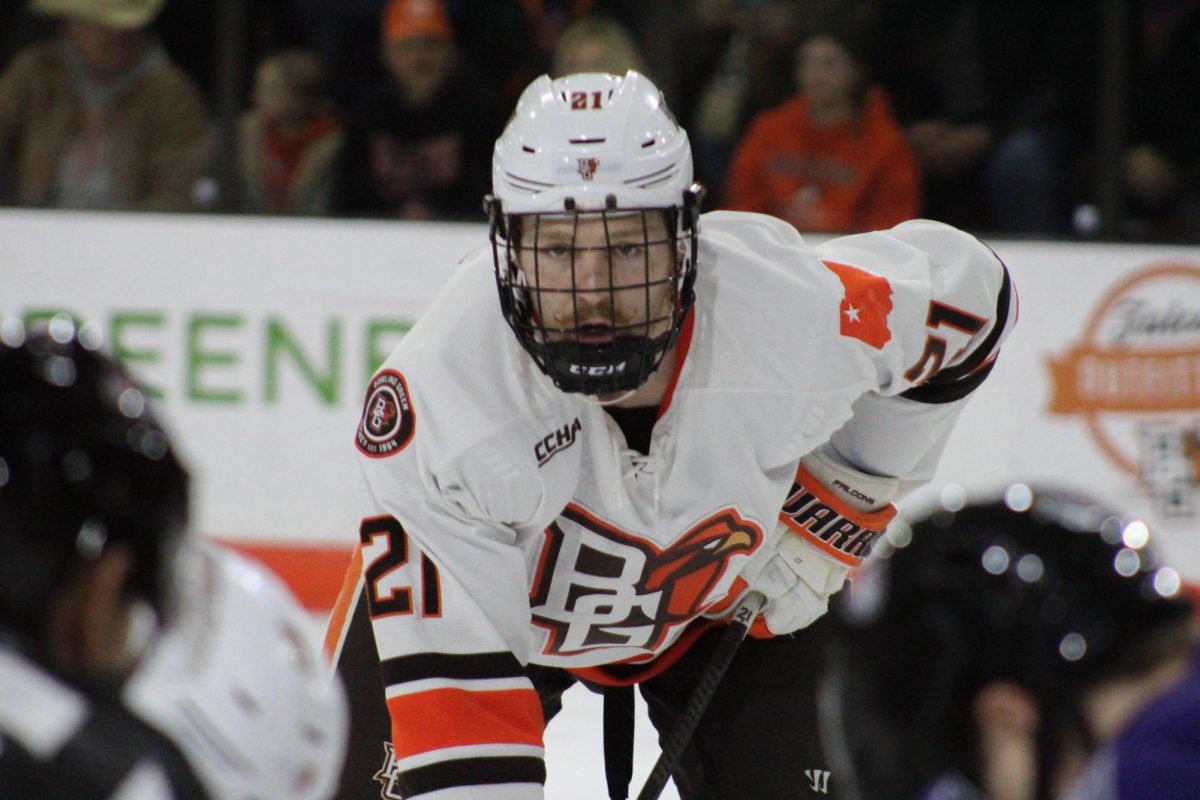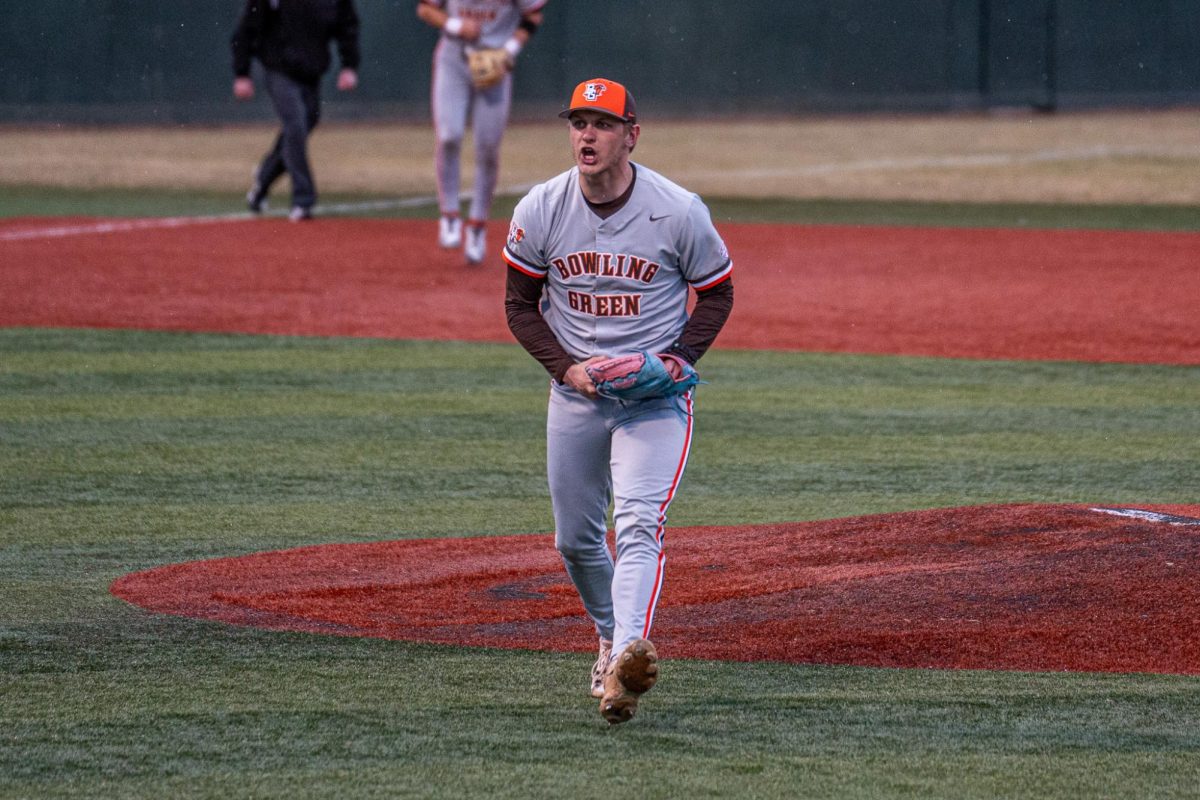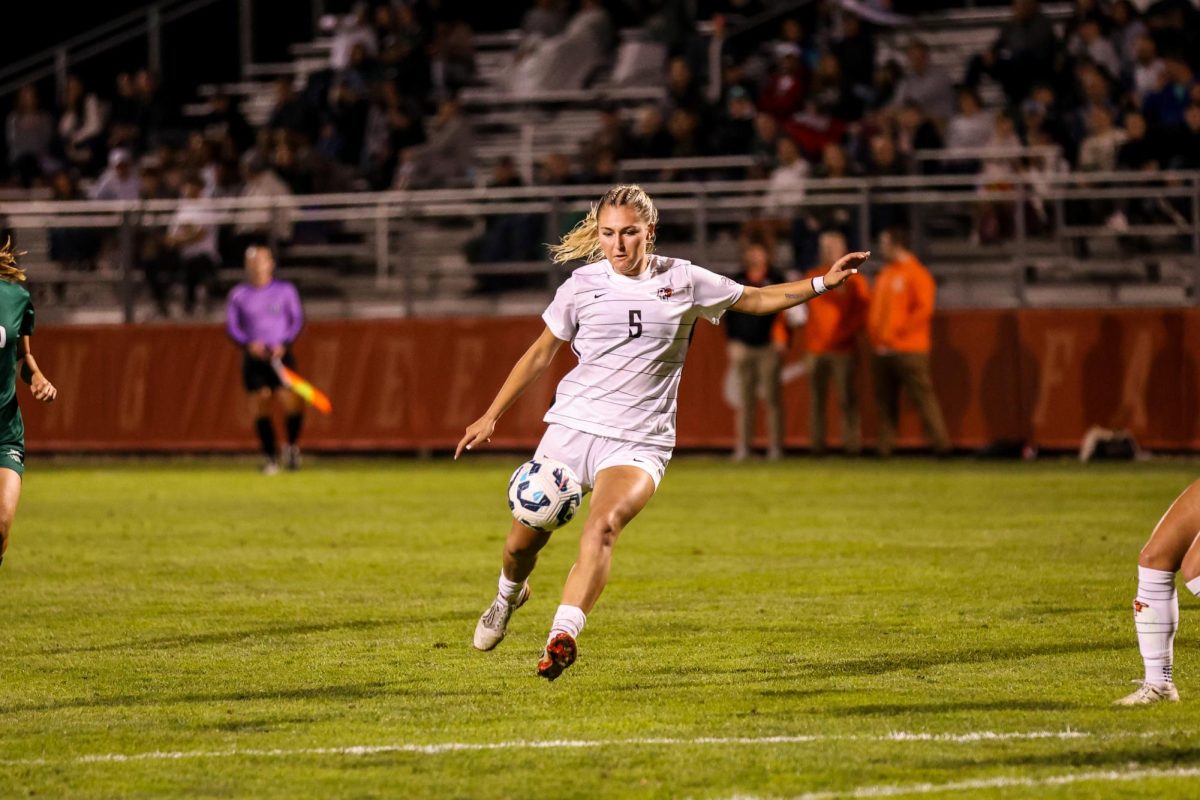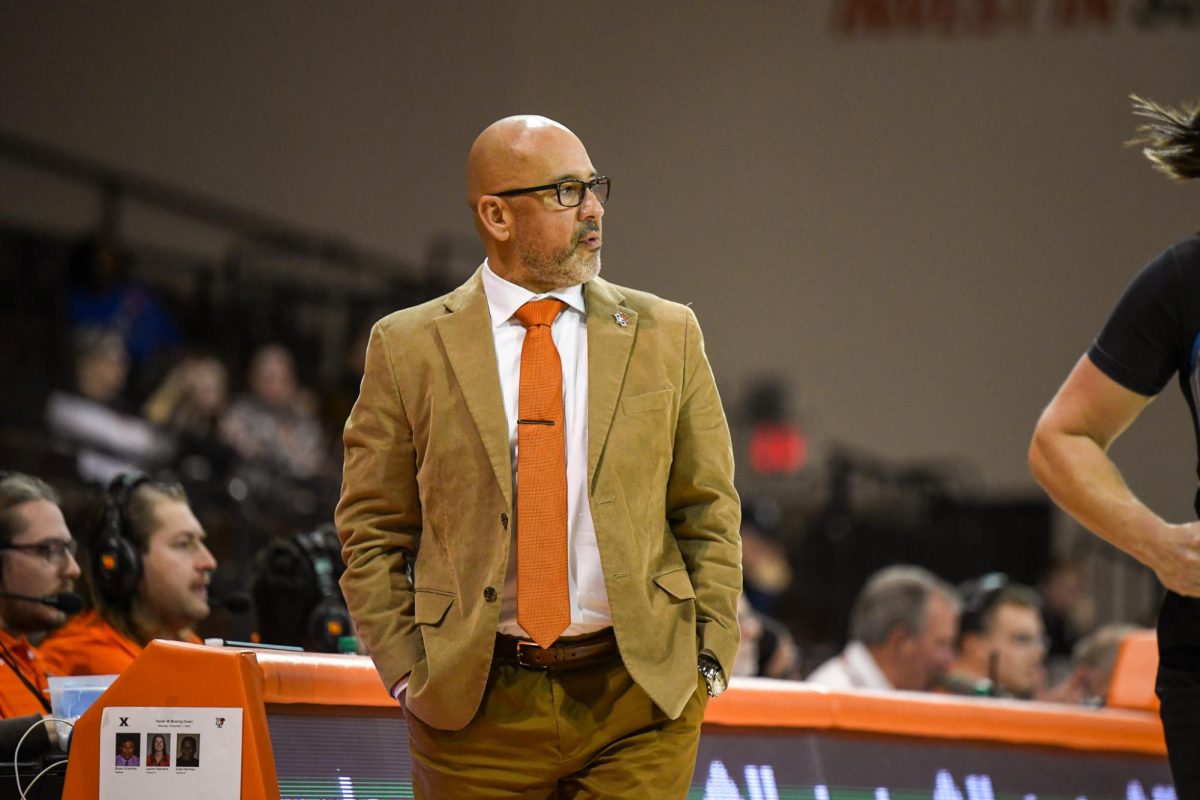The Ohio Cup is a rarely talked about thing, not just in college hockey, but also in the state of Ohio.
After all, there are only three Division I colleges in Ohio with hockey programs. Two of those programs — BG and Ohio State — face off this weekend at the BGSU Ice Arena.
Not only is it the Central Collegiate Hockey Association opener for both squads, but it is also the last time the schools will meet in the regular season as conference foes. Starting next season, Ohio State is joining the newly formed Big Ten Hockey Conference, while BG will go to the Western Collegiate Hockey Association.
Perhaps that is why the Ohio Cup carries a little more significance this season. Throw in Miami University, which will join the National Collegiate Hockey Conference next season, and this is the last season in which the three Ohio schools will be competing in the same conference.
While the prize for this is more-or-less in-state bragging rights, the Ohio Cup has some history. This is its 31st season, dating back to the 1982-83 season. BG has won it 12 times, most out of the three schools. However, the last time BG won it was in the 2001-02 season.
The Falcons will look to get a jump-start on that — and perhaps more importantly, the CCHA standings — this weekend against Ohio State.
The games Friday and Saturday are both scheduled to begin at 7:05 p.m.
The last time the schools faced off, the Falcons defeated the then-No. 2 ranked Buckeyes in a pair of shootouts in January.
Both games came down to the wire. In game one, Ohio State scored with 2:25 remaining in the third period to send the game into overtime. The next night, Cam Wojtala scored with 56 seconds to go in the third to send it to overtime.
This season, the Buckeyes are an intimidating defensive unit.
Their success has varied depending on the goalie in net. Ohio State came into the season unproven in net following the graduation of Cal Heeter.
Brady Hjelle came into the season with more experience, but has been the less-successful goalie. In two starts, he has a 3.36 goals-against average and a .901 save percent.
Collin Olson, a freshman out of the U.S. National Team Development Program, has been strong in net. Also with two starts, he has a 2.01 GAA and a .927 save percent.
However, the Buckeyes’ strength is on the blue line.
While not a particularly high-scoring unit, they are big, with four players standing 6-foot-3, 200 pounds or bigger. The behemoth of the defense is Justin DaSilva, who stands at 6-foot-6, 230 pounds.
“They’re big, they work extremely hard and are a real good defensive team,” said BG Coach Chris Bergeron. “They block a lot of shots and they take pride in blocking shots.”
Ohio State has had a bit of a rough go of things so far this season. In its exhibition game, it needed overtime to defeat Waterloo. In its season opener, it gave up six goals in a loss to Minnesota-Duluth. The Buckeyes then picked up a win against Duluth, before tying and losing to Quinnipiac this past weekend.
Like BG, Ohio State has seen issues with its special team’s performances. In the season, they are converting only five percent (1-for-20) on the power play and are allowing the opposition to convert on 21.7 percent (5-for23) of power plays.
BG was strong on the penalty kill against Colgate, killing all eight Raider power plays. However, the Falcons were also blanked on the power play, going 0-for-9.
Bergeron’s diagnosis for the lack of power play success is that it’s mental, not physical.
“I think it’s kind of a lack of confidence right now,” said BG forward Dan DeSalvo. “Obviously, we didn’t have a very good weekend [against Colgate]. It’s a matter of working things out between the two power play groups; finding that swagger we should have together.”
Goalie Andrew Hammond is questionable for the weekend with his elbow injury. Bergeron said he did not know who would start in goal, leaving the door open for any of the team’s three goalies — Hammond, Scott Zacharias or Tommy Burke, who started this past Saturday against Colgate — to play.


